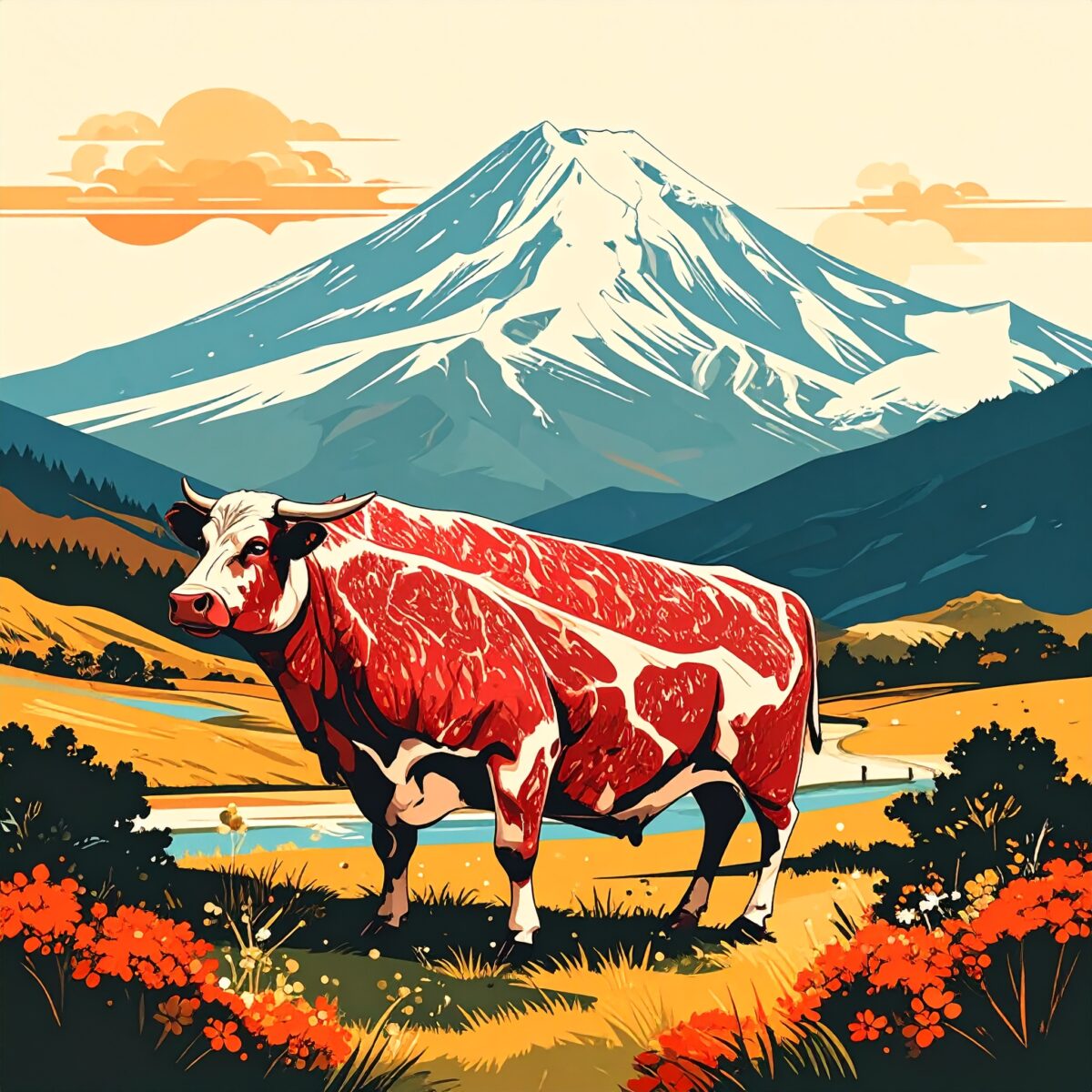Beyond Kobe and Matsusaka: Discovering Japan’s Hidden Wagyu Heritage
When one hears the word Wagyu, iconic names like Matsusaka, Kobe, and Omi often come to mind—brands renowned across Japan and around the world. Yet behind these storied labels lies a quieter world of deeply rooted regional pride: the domain of chi-Wagyu, or locally cultivated heritage beef. These rare breeds have been lovingly nurtured in small quantities, known only to those who seek excellence beyond the mainstream.
Chi-Wagyu: Local Pride, Naturally Raised
Chi-Wagyu refers to Japanese beef raised exclusively for local distribution, without the branding or marketing muscle of national fame. With extremely limited production, these cattle are often found only in local butcheries or select regional restaurants. Rather than engage in large-scale market competition, their producers focus on honoring local landscapes, feed traditions, and heritage methods—resulting in unparalleled depth of flavor and character.
What makes Chi-Wagyu truly captivating is not only its rarity, but also its clear expression of terroir. The grasses the cattle graze on, the climate they endure, and the hands that raise them all contribute directly to the flavor. Each bite tells a story of place.
The Elusive Murasawa: A Legacy Preserved in the Mountains of Yamagata
Deep in the mountainous heart of Mogami, Yamagata Prefecture, exists a near-mythical breed: Murasawa beef. Referred to by locals as “phantom beef,” Murasawa remains unknown to all but a select few. Celebrated for its remarkably pure lineage within the Japanese Black cattle family, Murasawa has resisted the wave of modern crossbreeding in favor of preserving its ancestral genetics across generations.
Cattle are raised via traditional free-range methods—roaming hillside pastures from spring to fall and wintering in stables. Feed is sourced almost exclusively from the surrounding region, and the use of antibiotics or growth hormones is minimized. The result is a robust yet elegant meat quality: finely textured with sweet, clean fat that hints at the wild herbs and natural grasses of its environment.
With production limited to only a dozen or so head per year, Murasawa beef never enters mainstream distribution. It is found, if at all, in rural inns or farm-to-table restaurants, served to those lucky enough to encounter it. A true embodiment of rarity, its mystique is matched only by the integrity behind its creation.

Tankaku: The Northern Champion of Lean Elegance
From the highlands of Iwate and the broader Tohoku region comes another remarkable regional breed—Tankaku beef, or the Japanese Shorthorn. Unlike the marbled richness of Kuroge Wagyu, Tankaku is celebrated for its bold, lean flavor. Born from a Meiji-era crossbreeding of imported American Shorthorns and Japan’s native Nambu cattle, this heritage line stands apart for both its lineage and philosophy.
What truly distinguishes Tankaku is its health-conscious, nature-first rearing. From spring to autumn, calves roam freely in expansive mountain pastures alongside their mothers. Raised on nothing but grass and mother’s milk, only the strongest survive in this near-wild environment—yielding beef that is both robust in health and superior in muscle development.
With its firm texture and a savoriness that unfolds gently with each bite, Tankaku appeals to modern palates seeking cleaner, leaner protein. Whether grilled, stewed, or served shabu-shabu style, its versatility complements a range of refined dining experiences.
The Future of Chi-Wagyu: An Era Where Quality Surpasses Quantity
In Japan today, culinary attention is turning toward individuality and authenticity. Increasingly, top-tier urban restaurants are forgoing headline Wagyu brands in favor of lesser-known regional varieties, elevating the story of the producer and the integrity of the process. Consumers and chefs alike now value context—moving beyond standardized ratings like “A5” or “marbling score” in pursuit of deeper culinary meaning.
Many Chi-Wagyu operations also embrace low-impact, circular farming models. Their sustainable practices represent not only a return to nature, but a forward-thinking blueprint for ethical animal husbandry in the decades ahead.
Summary: Chi-Wagyu at the Intersection of Journey and Flavor
For those venturing into Japan’s countryside, discovering Chi-Wagyu is an invitation to taste something truly unique. These heritage breeds—be it the elusive Murasawa or the dignified Tankaku—are more than delicacies; they are living testaments to local pride and generational care.
A single bite captures the essence of a place—its landscape, its people, its culture—making Chi-Wagyu not just a meal, but a deeply personal encounter with the spirit of Japan.




